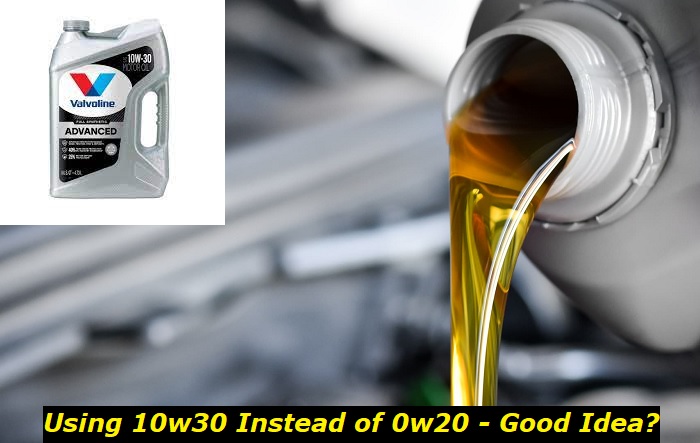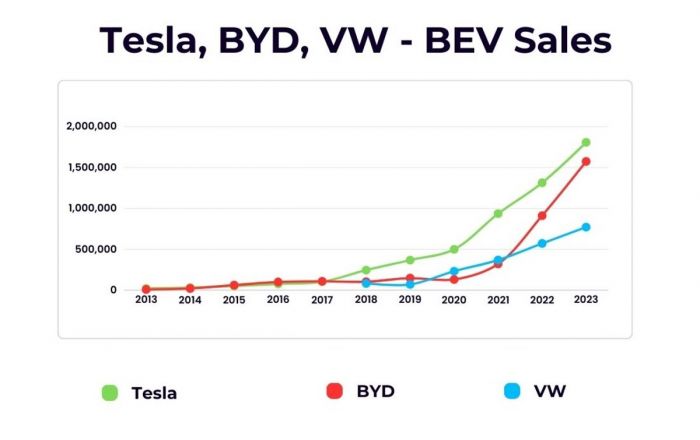Choosing a motor oil largely depends on its viscosity. There are different types of motor oils for various engine types. Whether your engine is heavy-duty, new, high-mileage, or high-tech, there's the right oil in the market to serve it.
Oil viscosity problems highlights
- Level of urgency:medium
- Average mileage:not related to mileage
- Repair cost:$250 - $350
- DIY repair:possible
- Commonreasons:wrong oil, wrong mechanic's advice
- Ifignored:reducing the lifespan of the engine
- How to solve:justchange the oil and use the recommended or OEM type

What Do the Oil Viscosity Numbers in Motor Oil Mean?
Motor oil viscosity can be described as the measure of the oil's resistance to flow. If the motor oil has a high viscosity, it's thick and has a higher resistance to flow due to its makeup. On the other hand, low viscous motor oil has low resistance to flow and less friction while in motion.
The Society of Automotive Engineering came up with two numbers that rate the motor oil viscosity in cold and hot conditions. The engine oil's viscosity is commonly classified as "XWXX." The X before the W is a number that represents the engine oil viscosity rating at a cold temperature of 0 degrees Fahrenheit.
It denotes the rate at which oil flows when it's cold. If the number is low, the oil thickens less in a cold temperature. This means a motor oil with a low number before W can reach the engine quickly since it's light and will flow faster. The engine will then run dry less, reducing the engine wear. An example of a cold temperature condition is during engine start-up. It can also mean a cold winter day.
Engine oil with a higher number before W thickens more in a cold environment. The W denotes winter. The XX after the W represents the motor's oil viscosity number at 100 degrees Celsius. An oil with a low number after W thins out at a higher temperature.
The high temperature can be when the engine is operating at optimum temperature. It can also mean a hot summer day. This means the low number of oil will flow quickly around the engine at high temperatures.
Motor oils with low viscosity at either cold or hot temperatures have a low resistance to moving around the engine. This translates to a better fuel economy. The trade-off is that the low-resistance oil forms a thin film of protection around engine parts.
That means it fails to provide sufficient lubrication protection for engine parts during hot temperatures. This can lead to increased engine wear. Modern engine oils have added additives to reduce thinning at high temperatures.
What's the Difference between the 0W20 and 10W30 Viscosity Ratings?
The 0W20 engine oil has its viscosity rated at 0W when the engine is cold and 20 when the engine heats up to operate at normal temperature. On the other hand, the 10W30 is placed at 10W during start-up when the engine is cold and 30 at normal engine operating temperature.
With the miniaturization-making mechanical or electronic devices smaller for efficiency-trend in technology, engines have not been left behind. Engines have evolved to be smaller with thin pathways. The reduction in engine size has resulted in the use of low-viscosity engine oils. This is where the 0W20 comes in.
It's a popular choice for modern engines since its low viscosity allows it to move efficiently through thin engine pathways. The oil grade also reduces the build-up of sludge within the pathways. It can also clean and lubricate the internal engine metal surfaces reducing wear and tear. Another benefit that the 0W20 has is an improved fuel economy. This is also a result of its low viscosity.
On the contrary, 10W30 motor oil is a higher viscous oil. The oil was standard in earlier vehicle models but has fallen out of favor as less viscous oils like 0W20 take center stage. 10W30 is a multigrade oil(it does well in both low and high temperatures). You'll most likely find it in heavy-duty vehicles that consume gasoline and diesel.
What are the Advantages that the 10W30 Has Over 0W20?
PLEASE NOTE: We don't recommend using 10w30 instead of recommended 0w20. Any choices of that kind will come as your own risk! It's always better to stick to the manufacturer's recommendations in terms of oil type and viscosity!
The 10W30 engine oil is more suited to heavy-duty engines since it can handle heavy loads. This is because of its thickness-it has a grease-like consistency. The oil grade can withstand a wide range of temperatures thanks to the addition of viscosity index additives.
For low temperatures, it can bear up to a temperature as high as 86 degrees and as low as -13 degrees Fahrenheit. That means it can function in environments with high temperatures and also pressure. For that reason, it's a good option for use in aviation vehicles and two-wheelers that operate at very high temperatures. In the past, it was considered one of the best oil grades for summer.
The 10W30 oil grade is also excellent for regions with fluctuating temperatures or significant temperature differences. That's because the engine oil grade is adaptable and is reasonably thin to aid in cold start-ups of heavy-duty engines. It's also not too thick in hot conditions to allow the formation of a lubricating film.
Another feature that gives the oil 10W30 grade an edge over the 0W20 is that it offers more lubrication properties to engine parts. This allows it to accord enough protection to engine parts such as pistons. It prevents wear and tear caused by friction of the moving parts and oxidation from engine combustion. The feature also makes it suitable for use in worn-out and old engines. Its thick film lets it stick effectively onto the deteriorating engine cylinders and bearings. Other qualities that make 10W30 grade oil convenient are:
- Enhanced resistance to thermal breakdown due to its high viscosity.
- A smooth engine that runs without noise due to its thick consistency.
- Low oil consumption in heavy-duty engines results in improved fuel economy and efficiency.
- An enhanced sludge control.
- Protection of internal engine parts from soot, rust, corrosion, and deposits.
What are the Potential Drawbacks of Using 10W30 Oil Instead of 0W20?
With all the benefits of using the 10W grade oil, it also has some drawbacks. The motor oil grade works well in high-temperature conditions or climates. However, it isn't as effective in cold climates and conditions as its less-dense counterpart, 0W20 grade oil.
The 10W30 grade oil affects the engine start-up if you live in a cold environment. This can be attributed to its poor cold-temperature fluidity because of its thicker consistency. Due to this, the engine consumes more oil leading to reduced fuel economy and efficiency.
Its reduced flow rate in cold temperatures is more pronounced in small passenger cars and some light truck models. This can also result in them experiencing overexertion due to the higher strain that the 10W30 grade oil brings, as it takes more time to reach the engine.
What Should You Consider When Choosing an Oil Grade For Your Engine?
One crucial factor to consider when choosing an oil grade for your engine is if it's American Petroleum Institute (API)certified. The brand you buy from has to have a starburst symbol and a service designation such as SP, SL, SM, and SP for engines that run on gasoline and CK-4, CL-4, CH-4, and CJ-4 for diesel engines. The symbol and letters on the container mean that API has tried and tested the product in the lab and engines and has approved it.
Another factor to consider when choosing motor oil is whether your engine's manufacturer recommends it. Different manufacturers have different engine oil specifications and approve specific grades based on those specifications. This is because different engine models have different load capacities, speed capacities, and temperatures, requiring oils of different viscosities. You can get the appropriate engine oil information from the car owner's manual. Other information sources are:
- The manufacturer's product data sheets.
- The engine's oil safety data sheet.
- A consultation with an expert mechanic.
Using a grade oil with a higher than the recommended viscosity leads to overexertion in the engine operation and results in power loss. Conversely, going for a lower-than-the-recommended viscosity won't give your engine parts enough protection. This is due to the failure to create an oil film that effectively lubricates the engine parts. The end result is scratches and wearing out of the internal engine parts, eventually leading to engine damage.
Your location's climate should also be a factor when choosing a suitable oil grade for your engine. Less viscous motor oils like 0W20 or 5W20 will be helpful if you live in a cold area. A hot climate area requires more viscous motor oil grade versions like 10W30 or 10W40. The type of engine that your car also comes into play when choosing a more dense or less dense grade oil.
Modern engine versions are likelier to use lighter oil-grade varieties such as 0W20 because of their thin pathways. Older and more worn-out counterparts require higher viscous options like the 10W30. They offer more lubricating properties than the less dense options.
What Happens If You Use the Wrong Oil Grade?
One of the consequences of using the wrong grade oil is voiding your warranty. The car owner's manual has recommended motor oil grades appropriate for your car's engine type. Veering off from using the recommended oil will have the dealership to void your warranty. This is if an engine issue related to the wrong grade motor oil crops up and the dealership finds out. The warranty won't be able to cover the repairs.
Bottom Line
There you have it-possible advantages and concerns of using 10W30 instead of 0W20. Refer to the car owner's manual or ask your mechanic for the correct engine oil type. Besides choosing the right engine oil type, you'll require regular oil changes to prevent sludge formation and deposits in your engine.
About the authors
The CarAraC research team is composed of seasoned auto mechanics and automotive industry professionals, including individuals with advanced degrees and certifications in their field. Our team members boast prestigious credentials, reflecting their extensive knowledge and skills. These qualifications include: IMI: Institute of the Motor Industry, ASE-Certified Master Automobile Technicians; Coventry University, Graduate of MA in Automotive Journalism; Politecnico di Torino, Italy, MS Automotive Engineering; Ss. Cyril and Methodius University in Skopje, Mechanical University in Skopje; TOC Automotive College; DHA Suffa University, Department of Mechanical Engineering






Add comment